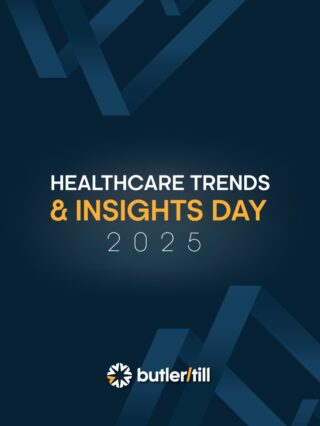The Association of National Advertisers (ANA) released its long-awaited Programmatic Media Supply Chain Transparency Study in December, and some of the contents have been making industry headlines. The report is more than 100 pages of findings and recommendations, but do not worry, we have read it and are sharing our key takeaways. We have organized this information into three major buckets:
- Things we think are important for the marketing industry to hear
- Things that call for a more nuanced exploration
- Things that left us with further questions
Before we dive into our findings, it is important to offer a summary of what is in this report. It was a study of 21 large, national advertisers who provided log-level data for $123 million in spend over a five-month period ending in January of 2023. A total of 12 supply chain companies actively participated, including three DSP’s, six SSP’s, and three ad verification partners. The takeaways that have been making headlines are:

Things That We Think Are Important For The Marketing Industry To Hear
Transparency is key. Marketers at brands and agencies should have full transparency into their programmatic buys. This should be table stakes for dealing with a programmatic partner, whether that be a DSP or an SSP. That transparency should come in the form of log-level data, as the ANA report clearly spells out and calls for. Black box business models in programmatic should be cast into the dustbin of digital media history. It is the responsibility of the buyer to demand transparency of what they are buying.
Waste is a big problem. If you accept the old cliché that “half of my advertising money is wasted; I just do not know which half,” then maybe you could spin the ANA’s 25% number into good news, but that falls well short of the mark in the age of addressability promised by programmatic advertising.

As an industry, we need to find metrics that relate to quality and business outcomes rather than just efficiency. The constant push of more for less will continue to produce waste. That waste is bad for everyone–not just the buyer. Waste manifests in the form of highly irrelevant and/or over-saturated impressions. This results in eroding audience trust and receptivity for advertising messages.
MFA’s pose a thorny quality challenge. The problem of MFA’s and the problem of waste are closely related. They are both exacerbated by a desire for cheap impressions, and they are both a source of programmatic pollution. It should come as no surprise that a consistent push for cost efficiency would have a deleterious effect on inventory quality. MFA solutions are not clear, though. First of all, defining an MFA has proven difficult. Industry groups (including the ANA) put forth a definition recently, which calls out some measurable attributes of an MFA like high ad loads and rapid refreshes on a site, but still includes subjective language like “low quality” content and “poorly-designed” pages. In any case, it is certainly worth a marketer’s time to pursue conversations about MFA’s with partners like DSP’s and SSP’s.
Things That Call For A More Nuanced Exploration
The recommendations are not practical for all advertisers. It is important to remember that the ANA (as the name suggests) represents the interest of large national advertisers. While it did not really come through in the trade headlines, the report itself acknowledges this. For instance, the report talks about the benefits of advertisers having direct agreements with SSP’s, it also notes that this is probably only worthwhile once you’re spending $50-$100 million on programmatic advertising. The same goes for direct contracts with DSP’s. Those platforms have minimums that are out of reach for most advertisers.

Some demands for transparency will be denied by default. There are some parts of digital advertising, and specifically open web programmatic, that do not provide the level of transparency called for in this report. The biggest example is log-level data. One of the core recommendations in the playbook section of this report is to get access to this data in order to bridge information asymmetry between the buy and sell sides. But depending on who you are buying from, that may not be possible. As cataloged by AdExchanger, big players like Amazon and Google do not provide log-level data. That is a huge chunk of spend where this level of data is not available, which makes it difficult for many marketers to attain the level of transparency called for in the report.
Things That Left Us With Further Questions
How representative is the sample? It is tough to project out definitive numbers to a space as large as the estimated $88 billion open web programmatic ecosystem. If you annualize the spend of the 21 participants evenly, it comes to roughly one third of one percent of the $88 billion space. The 21 advertisers who participated in this report are all large brands with a lot of resources. There is a long tail of smaller spenders in the programmatic space who have different objectives and approaches. Further, the period of the study was September of 2022 to January of 2023, which includes the busier holiday season, particularly for the participating brands in retail, CPG, and the spirits verticals. A follow up study with a variety of brands across spending levels and time periods might yield different results.
How do we verify the 5,000 website number? The report focuses a lot of attention on the fact that the studied campaigns ran on an average of 44,000 websites. That sounds like a big number on its face, but not necessarily when you compare it to the more than 350 million domains that are registered worldwide, and the 35.5 billion impressions measured in this study. The ANA suggests that running on fewer than 5,000 sites would “probably be sufficient.” The only evidence for this claim is an experiment by JP Morgan Chase more than six years ago. The report does not make a strong case for indexing performance to a specific number of websites. Each advertiser should look at their own campaigns to try to spot correlations between performance and a website count.
How can we avoid creating barriers to entry for publishers? The study understandably focuses a lot of attention on inventory quality and recommends getting a clear understanding of what you are buying programmatically.

While there is logic in this recommendation, if every programmatic advertiser limited their buys to this number of trusted sellers, it would effectively further consolidate power with a small number of players. That makes it a challenge, particularly for small, minority-owned publishers to break through and have a viable business model. There is a brief nod to this issue in the report, but there is a much larger conversation to be had about being intentional in building inclusion practices into a programmatic media buy.
There is so much more to consider and talk about in this report. It is a wealth of information and smart recommendations. Anyone with an interest in the broader programmatic ecosystem should take the time to read through it and consider the implications for the programmatic space going forward. We all have an interest in reducing waste, increasing transparency, and promoting a healthy, sustainable ecosystem that works for everyone long into the future.
Do you have thoughts on this report? We would love to connect, contact our team of experts today.





